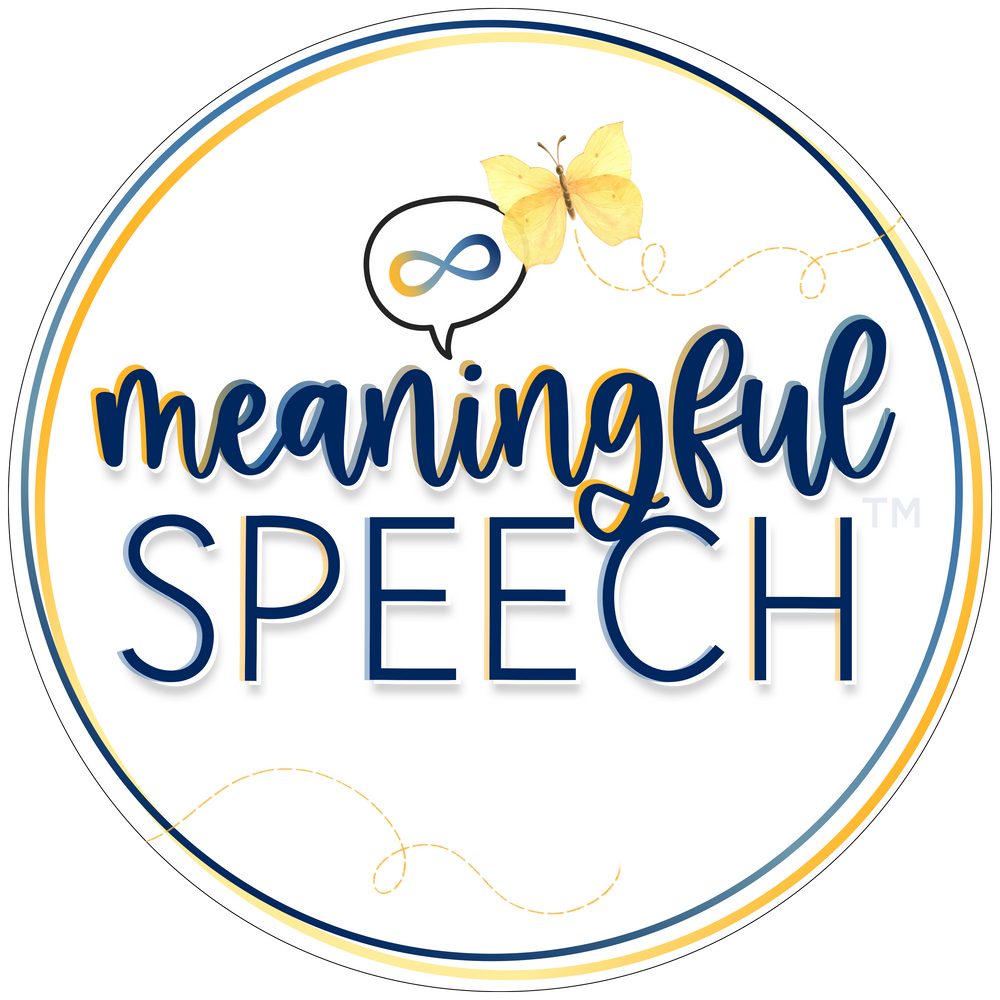Literacy and Gestalt Language Processing
May 07, 2025
We’re often asked how to support gestalt language processors on their literacy journey. There is no research out there yet specifically on gestalt language processors learning to read. However, we do have information based on clinical experience. We also have some tips on how to increase engagement during book reading with gestalt language processors.
What we know about literacy & gestalt language processors from experience
- Many GLPs are hyperlexic and can decode very easily, but then have difficulty with reading comprehension.
- Many GLPs are whole word readers and benefit from a "whole to part" approach.
- Some GLPs will read later and won't "catch on" to a phonics based approach until they have progressed in their language development to stages 3-4+ (self-generated language) and are processing words as units.
- Working closely with a reading specialist or a speech-language pathologist well versed in literacy can help you figure out what approach might work best for your child.
How to support GLPs on their literacy journey
- Mirror what's going on in spoken language therapy but in written language.
- Turn the captions on when they are watching shows or engaging with high interest media.
- Get the child to enjoy reading and think of themselves as a reader by selecting books and text that connect with their interests.
- Consider whole to part teaching.
- Example: phrases/sentences that later get broken down to single words (similar to how gestalt language processors develop language).
Ideas to engage gestalt language processors in book reading
- Increase your Intonation/Emotion: Gestalt language processors are attracted to high emotion and intonation. These make book reading more interesting and it is more likely that they will pick up on the language in the book and the potential gestalts you are modeling.
- Consider Regulation: Consider how you can support regulation while book reading. Many gestalt language processors have sensory differences. Students need to be well-regulated to pick up on our language models. Ask yourself, "what can I do to proactively modify the environment and my reading so that it supports the client and their sensory needs?"
Example: Flexible seating, decreasing visual stimuli in room, dimming lights, etc.
- Chameleon Reader: The chameleon reader allows you to record audio to go along with books. Parents, SLPs and/or other professionals can use it to record models of potential gestalts to go along with books and/or the photos in books. Since gestalt language processors tune into language with high emotion and intonation, this tool allows books to be paired with audio recordings that make book reading more engaging and filled with easily mitigable models.
- Find books with mitigable gestalts: Preview books before purchasing and using them in your sessions or at home to see the language used throughout the book. Find books with mitigable models already in the story!
Examples: Elephant and Piggie books by Mo Willems, Shorty & Clem by Michael Stack, I don’t want to be a Frog by Dev Petty.
- Find books with songs: Many GLPs are musical. Their gestalts may come from songs and they may be more drawn to the intonation and emotion of song models rather than spoken models. Especially for non-speaking children.
Example: Nursery rhyme books, Barefoot Books publishing books
- Add in your own models: Get creative and add in your own mitigable whole phrase models to any book while reading by commenting on the pictures, what’s happening in the story. You could also try using wordless picture books and create your own commentary of mitigable gestalts.
Examples of Wordless Books: Chalk by Bill Thompson, Journey by Aaron Becker, Tuesday by David Weisner. - Get creative! Create personalized books for the child filled with mitigable models! This helps make book reading meaningful to the child. Consider adding photos of the child and their everyday activities and routines, special/preferred interests, etc.
Want to learn more in-depth information about how to support gestalt language processors?
- There are many free podcasts, webinars and articles to get you started. A comprehensive list of resources can also be found on our website.
- Consider taking the Meaningful Speech course to learn more about how your child or client processes language, how you can help move them from echolalia to self-generated (original flexible) language, child-led therapy, and neurodiversity-affirming practices.
- Consider taking our new AAC + Gestalt Language Processing course. It will teach you how to identify, evaluate and support gestalt language processors who use AAC or who you think might benefit from AAC.
- Look for a speech-language pathologist (SLP) who "gets it" and can help you in supporting your child's language development. Check out our registry. for SLPs who understand gestalt language processing and child-led therapy.
